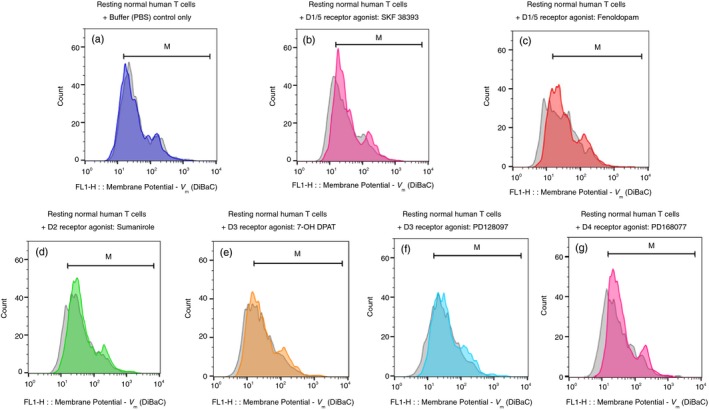Figure 2.

Selective D1/5R agonists induce depolarization of resting CD3+ normal human T cells within 15 seconds. (a–g) The fluorescence profiles of the voltage‐sensitive fluorescence dye DiBac3 inside resting normal human T cells, both before (gray) and then again 15 seconds after (colored) addition of either: Control buffer (PBS) only (a), D1R/D15R (D1‐like) agonists: SKF 38393 (b) and Fenoldopam (c); D2R agonist: Sumanirole (d); D3R agonists: 7‐OH DPAT (e) and PD 128907 (f); D4R agonist: PD 168077 (g). All the DR agonists were used in a final concentration of 10−7 M (100 nM), prepared freshly before each experiment, from either their powders or very concentrated stocks stored in at –80°. The corresponding intensity of the voltage‐sensitive fluorescence dye DiBac3 was determined by the geometric mean (GM) of the fluorescence (FL1), in each tube before and after addition of each agonist, and all the GMs and fold change/shift are shown in Table 1. The results shown in the figure are of one representative experiment, of two performed altogether, on T cells of different healthy human participants. In both experiments the same pattern of results was observed, but the actual extent of the depolarization varied. This was not surprising in view of the differences between individuals with regard to the level of DRs on the cell surface of their T cells (found in 7 and also in the current study (data not shown).
